With thousands of plants and counting, this Iowa gardener shares what she has learned about caring for the most romantic of flowers.
Things started innocently enough: a few cultivars the first year, a few more the next. But within five years, Kris Jurik had amassed more than 1,000 peony plants in her Ames, Iowa, garden. "It's an addiction," she says. Even her garage is stacked with boxes of the tubers. "I'm so tight on space in the garden that I'm trying to figure out how to squeeze in just one or two more."
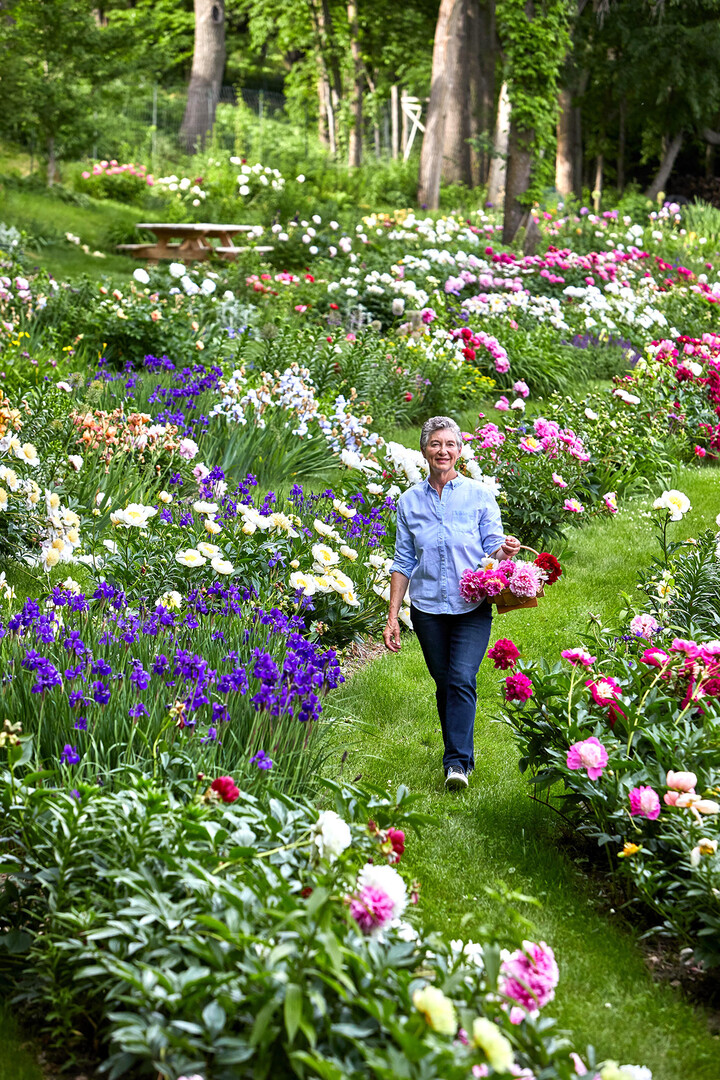
Kris traces the start of her plant obsession to elementary school field trips to the Nichols Arboretum in Ann Arbor, Michigan. "That place is magic," she says. When she and her husband moved to Iowa in 1985, she devoted several of their 8 acres to her then-favorite plants, irises and hostas. But when the deer ate the hostas, she started looking for another perennial to fill the holes. Enter the peony. "That is one plant the deer don't touch," she says.
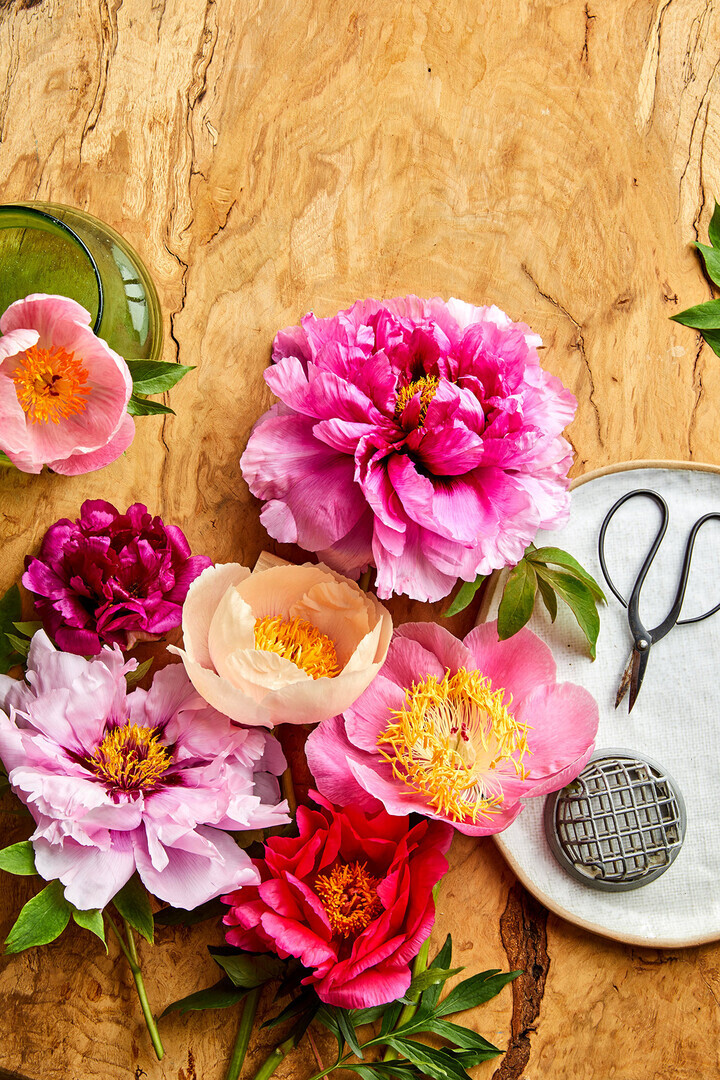
Peonies quickly went from being a problem-solver to a passion. Kris started attending meetings of The American Peony Society (eventually joining the board), where she learned about hybrids, rare cultivars, and the range of colors. "Do you know how many different colors of white there are?"
To share her enthusiasm, Kris opens her property to garden tours in spring and summer. By word of mouth, artists also find their way to her peony patch, pulling up chairs and painting the flowers. "They're so interesting-looking, especially when they start to unfurl," she says.
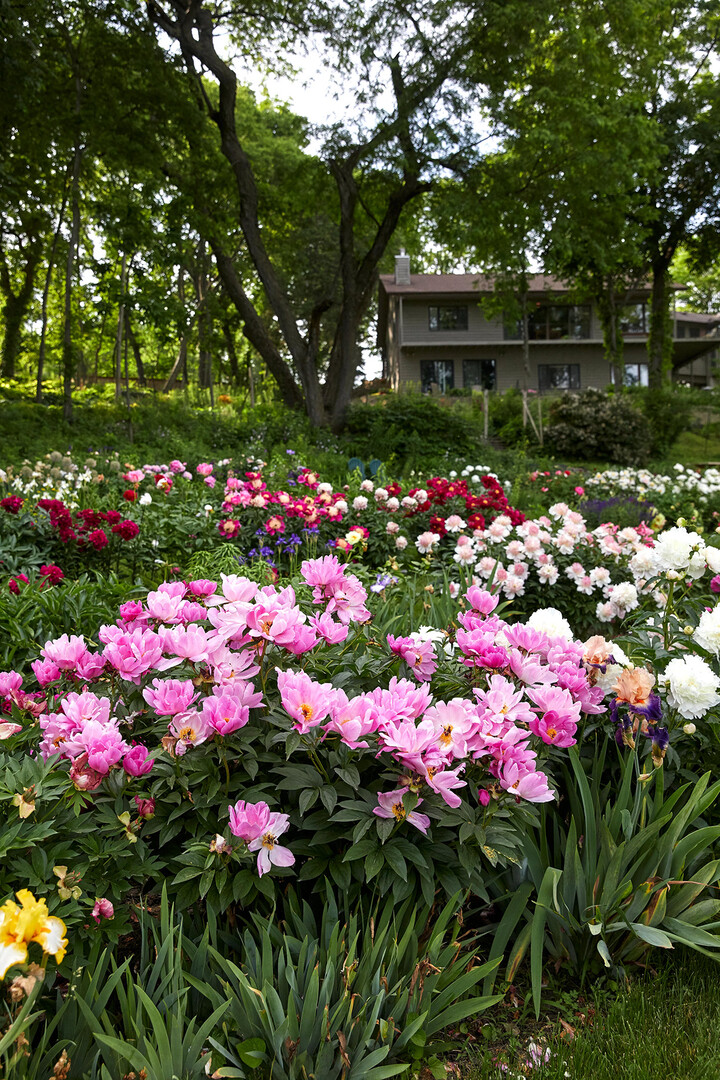
But what ultimately keeps Kris hooked is how little the flowers require beyond being admired. She doesn't stake them (she doesn't mind if they flop a bit), rarely waters them (rainwater is usually enough), and never fertilizes them. "You really can plant them and walk away."
Bearded and Siberian irises in purple and blue grow among the masses of peonies in Kris Jurik's garden. "They are good contrasts to all that pink, red, and white," she says. The full, round peony flowers play off the more vertical irises in both the garden and arrangements.
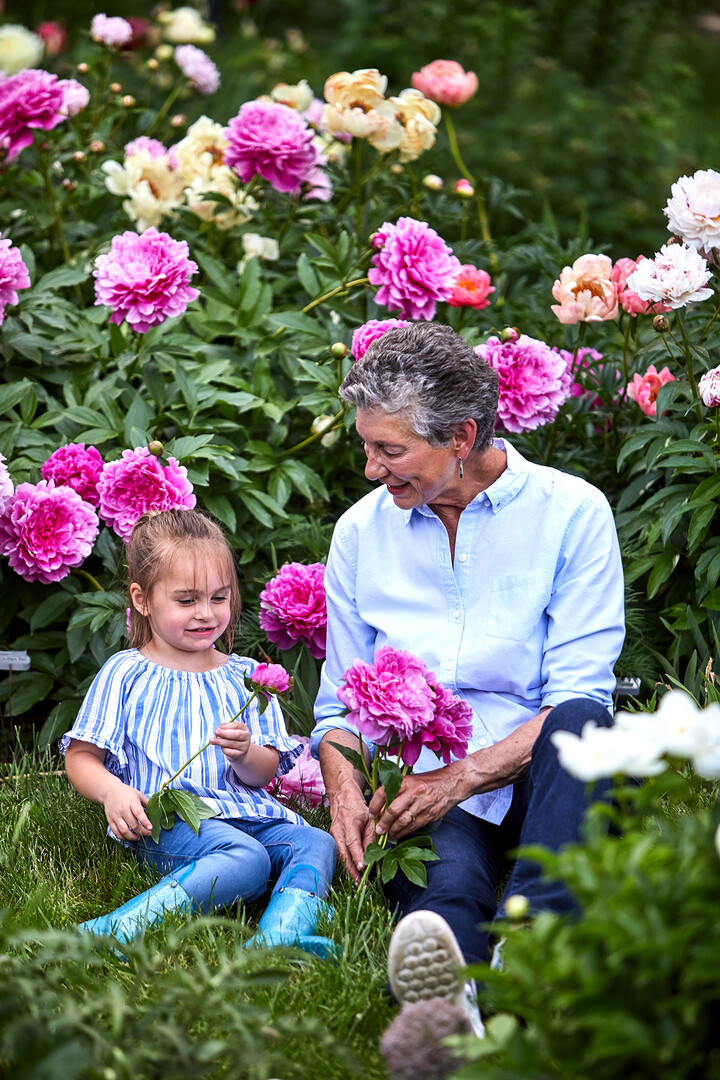
Kris doesn't deadhead her peonies even though some people believe that doing so can increase the flowers of certain varieties the following year. She simply cuts down foliage in fall.
For arrangements, cut the buds when they feel like "nice, soft marshmallows," Kris says. Too hard and they won't open. "You've got to pinch those things to make sure they're ready," she says.
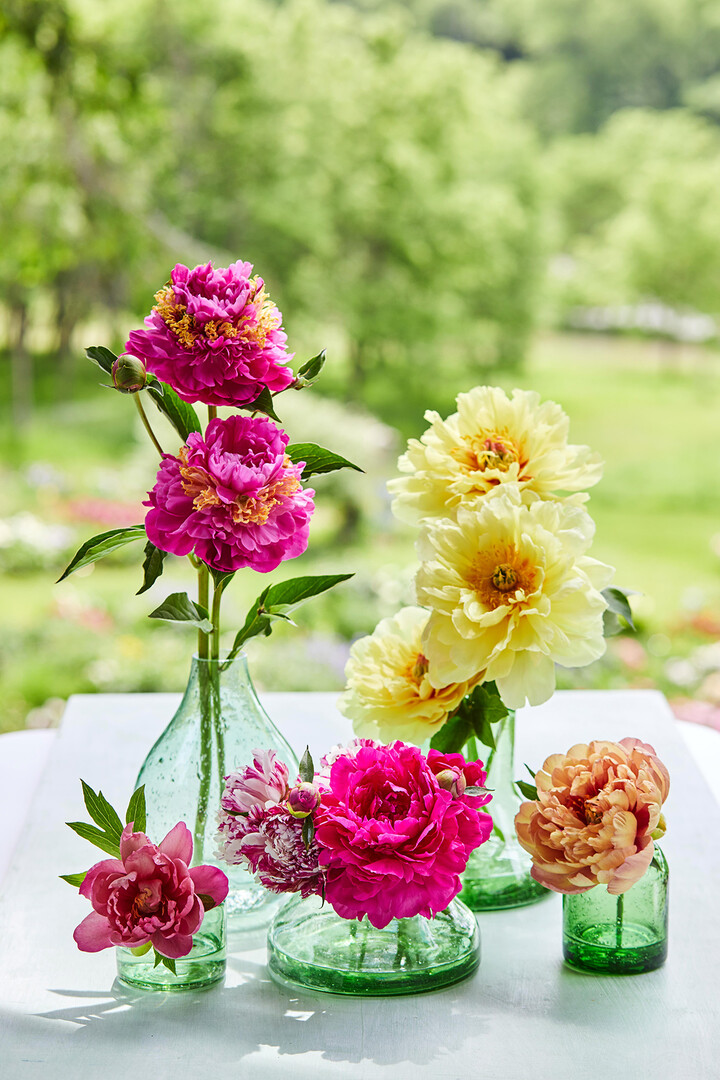
Types of Peonies
Herbaceous Peonies
This is the peony most people know and love, with flowers ranging from simple singles to fluffy doubles in shades of pink, red, and white. Plants grow in Zones 2–8 and need an extended period of winter cold to bloom properly. You can expect blooms to last seven to 10 days.
Tree Peonies
Reaching up to 7 feet tall and with flowers measuring up to 10 inches across, these shrubs make a big impact in the garden. The flowers bloom in a wider range of colors than herbaceous peonies and last a little bit longer (up to 14 days). Growing in Zones 4–9, they don't require below-freezing temperatures but can handle them.
Itoh Peonies
Also known as intersectional peonies, these hybrids combine the vigor of herbaceous peonies with the sturdiness and color range of tree peonies. Kris thinks the perfectly mounded, small plants are the best-looking ones to landscape with. Itoh plants bloom the longest (up to a full month) and grow in Zones 4–9.
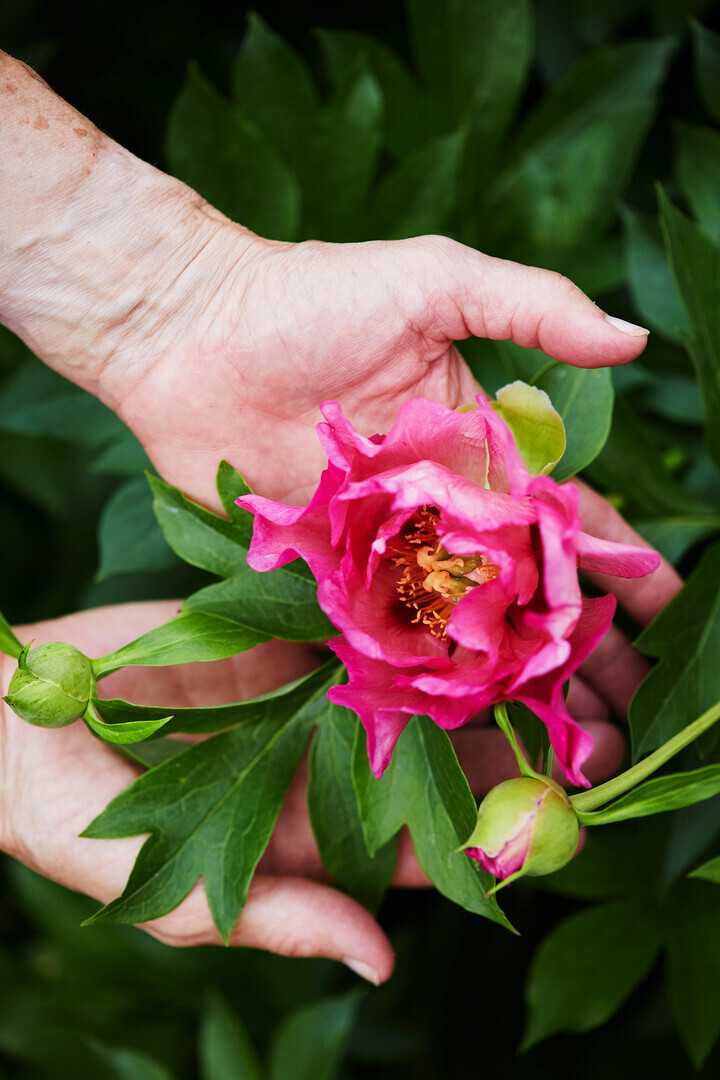
Tips for Growing Peonies
Peonies are unfussy. In the right conditions, some cultivars can live more than 100 years.
Location
Given that peonies prefer not to be transplanted, choose a location wisely. They thrive in full sun and need to be spaced 3–4 feet apart to ensure good air circulation.
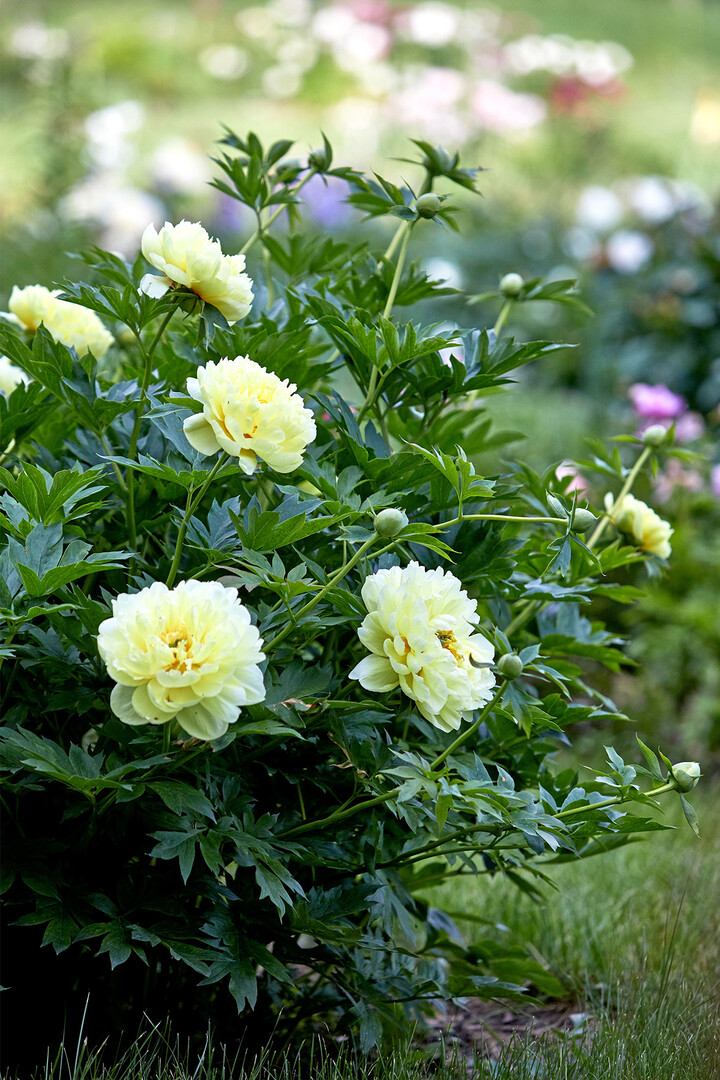
Best Starter Peony
When beginning growers ask Kris which peony to start with, she often directs them to the itoh 'Bartzella'. It’s especially disease-resistant, can handle a little shade, and pumps out 30–60 lemon-scented flowers per season.
Planting
Though you can plant peonies from nurseries in spring, Kris prefers to plant the more affordable bare-root tubers in fall. For tubers, dig a 2-foot-wide and -deep hole. Peonies prefer rich, loamy soil, so amend sandy or clay soil with compost. Mound soil so a tuber sits in the hole within 2 inches of the surface and eyes facing up. Water thoroughly, then layer on mulch for winter protection.
Peak-Season Care
Resist fertilizing when branches unfurl in spring to avoid burning the tender new growth. If you want to boost growth, work in more compost during early summer. In spring and summer, water often enough that the top 4–6 inches of soil remains moist but not soggy. (Kris gets enough rain that she rarely needs to water.) Water at the bases to keep foliage dry and avoid problems like powdery mildew. You can let plants flop or keep them upright with a peony hoop (sold at garden centers).
Dormancy
In fall cut the foliage to the ground to eliminate any overwintering diseases. Shovel on another layer of mulch, then leave the plants alone until next spring.
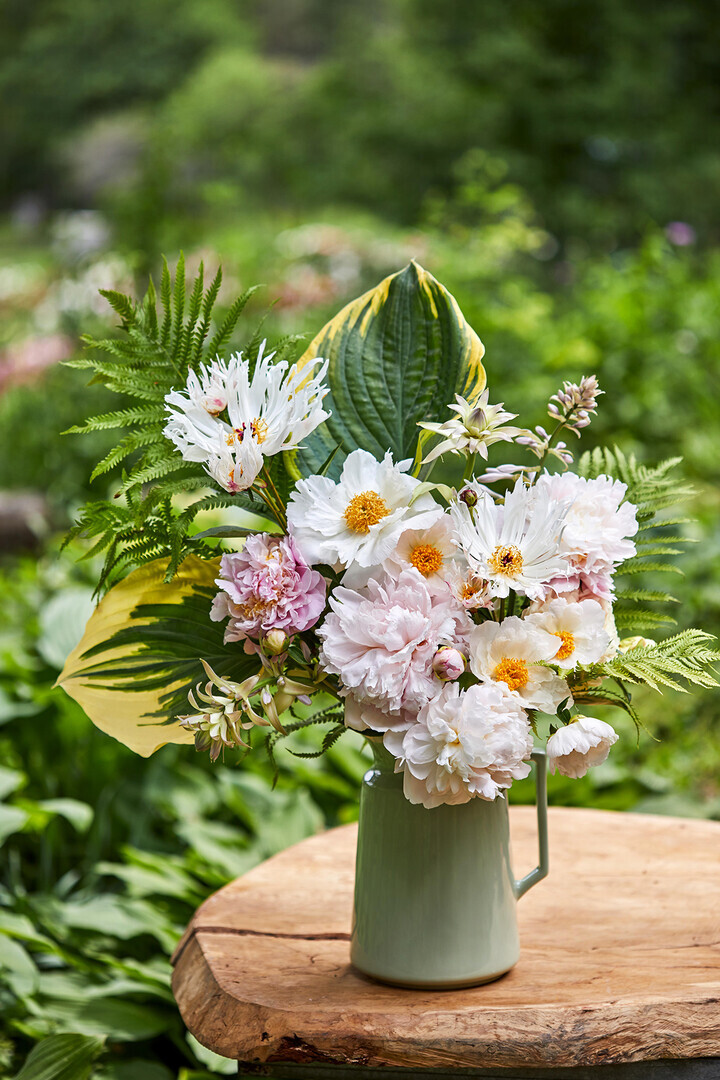
Peony Bouquets
In a bouquet, hosta leaves and flower spikes play off the single-form 'Astarte' (with yellow centers) and 'Lois Kelsey' (top left) peonies, as well as fluffier varieties. 'Sir Frederick Stern' is a particularly hardy tree peony with flowers that open to reveal a purple heart in the middle. Kris loves herbaceous 'Mini Belle' because, "with that big, lustrous red flower and giant yellow center, you can spot it from far away."
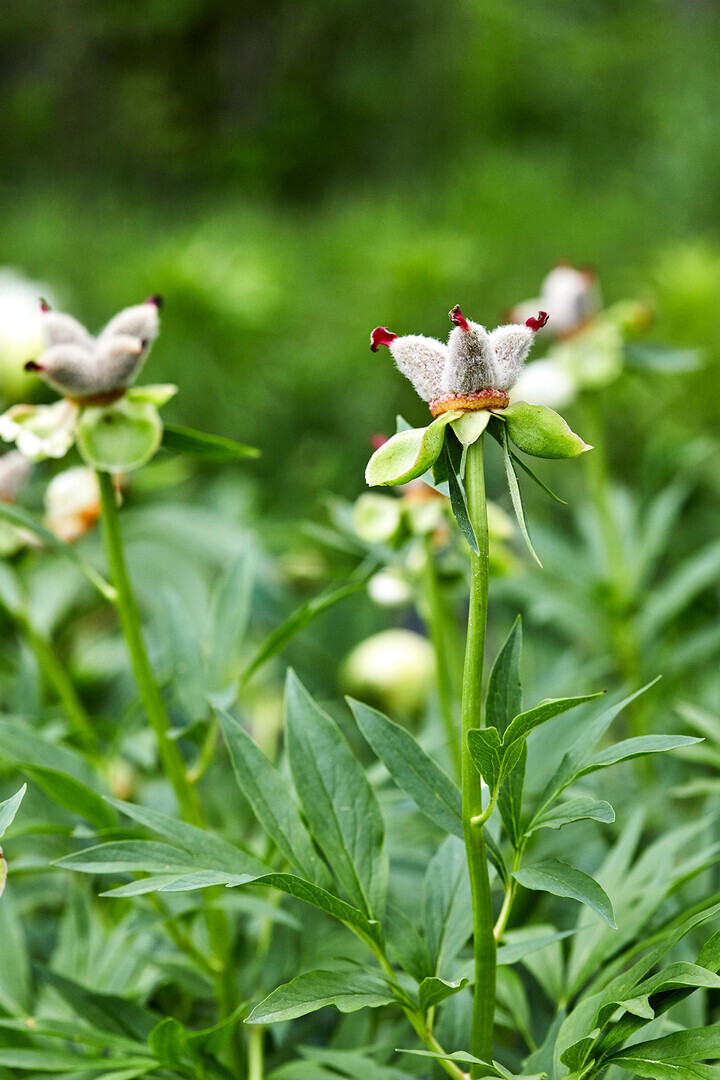
After Bloom
Some cultivars have petals that hang on after flowering; others like 'Pageant' drop them, which is known as self-cleaning. When petals are gone, structural carpels, the center seed-bearing structure, are shown off.